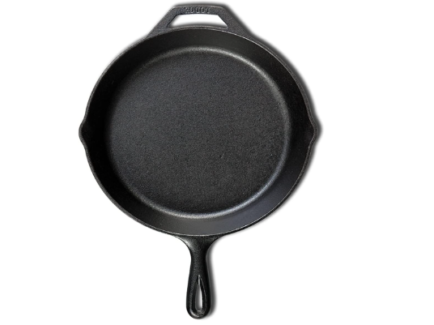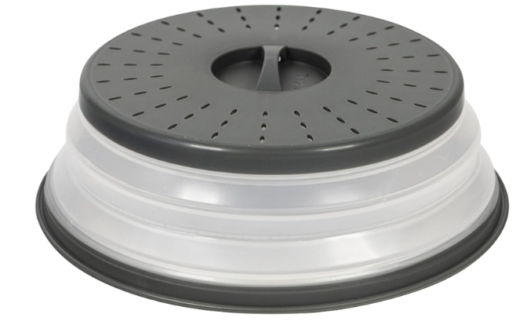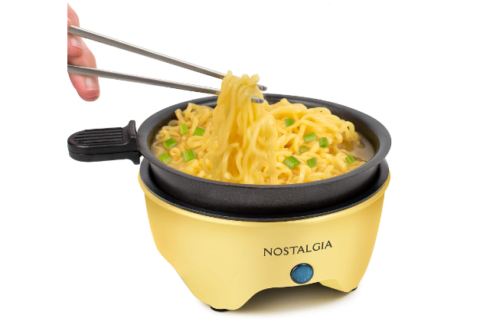Home canning allows you to enjoy fresh food all year,...
Read More
A canning rack is an essential tool for home canning and preserving. It is a specially designed wire rack that fits inside a canning pot or pressure canner and holds jars in place during the canning process. The canning rack allows for even heating and circulation of water or steam around the jars, which is necessary for safe and effective canning. The size and design of the canning rack will vary depending on the size and shape of the canning pot or pressure canner and the size and number of jars being canned.
Using a canning rack is an important part of the canning process and helps to ensure that jars are properly sterilized and sealed for safe and delicious preserved foods.
What is a canning rack used for?
A canning rack is used for holding jars in place during the canning process. The rack fits inside a canning pot or pressure canner and allows for even heating and circulation of water or steam around the jars. This is important for safe and effective canning, as the high heat helps to sterilize the jars and create a vacuum seal that keeps the preserved foods fresh and safe to eat for an extended period of time.
The canning rack also helps to prevent the jars from touching each other, which can cause them to break or crack during the canning process. Overall, using a canning rack is an important step in home canning and helps to ensure that the finished product is safe, delicious, and shelf-stable.
Can you use a silicone rack for canning?
It is not recommended to use a silicone rack for canning.
Silicone is not heat-resistant enough to withstand the high temperatures required for canning, and may not be strong enough to support the weight of the jars. It is important to use a rack made specifically for canning that is heat-resistant and sturdy enough to hold the jars securely in place during the canning process.
What can I use instead of a canning rack?
If you don’t have a canning rack, there are a few alternatives that you can use:
- Kitchen towel: You can place a clean kitchen towel or several layers of cheesecloth at the bottom of the pot to prevent the jars from directly touching the bottom of the pot. This will help prevent the jars from breaking or cracking during the canning process.
- Silicone trivet: A silicone trivet can also be used as a makeshift canning rack. Make sure that it fits snugly in the bottom of the pot and that it is heat-resistant.
- Jar lifter: You can also use a jar lifter to lower the jars into the boiling water or steam, and to remove them from the pot after the canning process is complete. This will help prevent the jars from breaking or cracking, even if they are in direct contact with the bottom of the pot.
While these alternatives can be helpful in a pinch, using a proper canning rack is still the best option for safe and effective home canning.
Is a rack necessary for canning?
While a canning rack is not absolutely necessary for canning, it is highly recommended. The purpose of the canning rack is to hold the jars in place and prevent them from touching the bottom of the pot or canner, which can cause them to break or crack during the canning process. Additionally, the canning rack allows for even heating and circulation of water or steam around the jars, which is necessary for safe and effective canning.
Without a canning rack, it can be more difficult to ensure that the jars are properly sterilized and sealed, which can lead to spoilage or contamination of the preserved foods. Therefore, while it is possible to can without a rack, using one is strongly advised for the best results.
Benefits of using canning rack
Using a canning rack during the home canning process offers several benefits:
- Prevents jars from touching the bottom of the pot or canner: By using a canning rack, the jars are lifted off the bottom of the pot, preventing them from coming into direct contact with the heat source. This reduces the risk of the jars breaking or cracking due to thermal shock.
- Promotes even heating and circulation of water or steam: The canning rack allows for even heating and circulation of water or steam around the jars, which is important for effective sterilization and sealing of the jars.
- Easier to handle the jars: A canning rack makes it easier to handle the jars during the canning process. The rack allows you to lower multiple jars into the pot at once and to lift them out of the pot simultaneously, making the process more efficient and less time-consuming.
- Prevents jars from moving around: When using a canning rack, the jars are held securely in place, preventing them from moving around and potentially colliding with each other during the canning process. This reduces the risk of the jars breaking or cracking, which could result in spoilage or contamination of the preserved foods.
Overall, using a canning rack is an important step in the home canning process and helps to ensure that the finished product is safe, delicious, and shelf-stable.
How do you use a canning jar rack?
Using a canning jar rack is a simple process:
- Prepare your canning jars and food according to your recipe and fill the jars.
- Place the canning jar rack inside your canning pot or pressure canner, making sure it is level and secure.
- Use a jar lifter to lower the filled jars into the rack, making sure they are spaced evenly and do not touch each other or the sides of the pot.
- Fill the pot with water or liquid according to your recipe, making sure the water level is high enough to cover the tops of the jars by at least one inch.
- Turn on the heat and bring the water to a boil. Make sure to follow the specific processing time and pressure requirements for your recipe and altitude.
- Once the processing time is complete, use the jar lifter to carefully remove the jars from the rack and place them on a towel or rack to cool.
- Allow the jars to cool completely before testing the seals and storing them in a cool, dark place.
Remember to always follow the instructions and guidelines for your specific canning recipe and equipment, as different recipes and canners may require slightly different procedures.
Factors to consider when choosing the best canning rack
When choosing the best canning rack for your needs, consider the following factors:
- Size: Make sure the canning rack is the right size for your canning pot or pressure canner. Measure the diameter of your pot and choose a rack that fits snugly inside.
- Material: Canning racks are typically made from stainless steel, aluminum, or plastic. Stainless steel is the most durable and long-lasting, but aluminum is lighter and easier to handle. Plastic is lightweight and won’t scratch your jars, but it may not be as durable as metal.
- Design: Look for a canning rack with a stable and sturdy design that can hold your jars securely. Some racks have handles or grips that make it easier to lift the rack in and out of the pot.
- Compatibility: Some canning racks are designed for use with specific types of jars, such as regular or wide-mouth jars. Make sure the rack you choose is compatible with the type of jars you plan to use.
- Ease of cleaning: Look for a canning rack that is easy to clean and maintain. Stainless steel and plastic racks are usually dishwasher safe, while aluminum racks may require hand washing and careful drying to prevent rust.
- Price: Canning racks are available at a range of prices, from budget-friendly options to more expensive models. Consider your budget and choose a canning rack that fits your needs and preferences within your price range.
By considering these factors, you can choose the best canning rack for your specific canning needs and equipment.
How do I keep my canning rack from rusting?
To keep your canning rack from rusting, follow these tips:
- Dry the rack thoroughly: After each use, make sure to dry the canning rack thoroughly with a clean towel or cloth. Moisture is one of the main culprits of rust.
- Store in a dry place: Store the canning rack in a dry place where it won’t be exposed to moisture or humidity. If you don’t have a dry storage area, consider storing the rack in a sealed plastic bag.
- Apply a protective coating: Before using the canning rack for the first time, you can apply a thin layer of vegetable oil or cooking spray to the rack. This will help to create a barrier between the metal and the moisture, preventing rust from forming.
- Avoid abrasive cleaners: Avoid using harsh or abrasive cleaners on the canning rack, as they can scratch the surface and make it more prone to rust. Instead, use a mild dish soap and warm water to clean the rack.
- Remove rust spots: If you do notice rust starting to form on your canning rack, use a scrubber or steel wool pad to gently remove the rust. Then, dry the rack thoroughly and apply a protective coating of vegetable oil or cooking spray.
By following these tips, you can keep your canning rack in good condition and prevent rust from forming.
Troubleshooting about canning rack
Here are some common troubleshooting tips for offset serrated knives:
- Blade is dull: If the blade is dull, it may not be cutting as effectively as it should. Sharpen the blade using a serrated knife sharpener to restore its cutting performance.
- Blade is damaged: If the blade is damaged, such as chipped or bent teeth, it may need to be replaced. Contact the manufacturer or a professional knife sharpener to see if it can be repaired or if a replacement is necessary.
- Blade is loose: If the blade is loose, the screws may need to be tightened. Use a screwdriver to tighten the screws, but be careful not to over-tighten them as this can damage the blade.
- Handle is loose: If the handle is loose, the screws may need to be tightened. Use a screwdriver to tighten the screws, but be careful not to over-tighten them as this can damage the handle.
- Knife is rusted: If the knife is rusted, use a rust eraser or a mixture of baking soda and water to remove the rust. Rinse the knife thoroughly with water and dry it with a clean towel.
By following these troubleshooting tips, you can address common issues with an offset serrated knife and keep it in good working condition. If the issue persists, contact the manufacturer or a professional knife sharpener for further assistance.
Canning rack - FAQs
Here are some frequently asked questions about canning racks:
Yes, you can reuse your canning rack as many times as you like, as long as it remains in good condition.
No, it is not recommended to use a regular cooling rack as a canning rack, as it may not be strong enough to support the weight of the jars and may not be made of food-grade materials.
It is not recommended to stack canning racks on top of each other, as this may cause the jars to become unstable and tip over during the canning process.
No, it is not recommended to use a pressure canner without a canning rack, as the jars need to be held in place during the canning process to prevent them from moving around and breaking.
Yes, you can use a canning rack in a regular pot as long as the pot is large enough to hold the rack and the jars, and has a lid that fits snugly.
To clean your canning rack, simply wash it with warm soapy water and dry it thoroughly before storing it. Avoid using abrasive cleaners or steel wool, as this can scratch the surface of the rack and cause rust to form.
Conclusion
In conclusion, a canning rack is an important tool for anyone who wants to safely and efficiently can their own food. It helps to keep jars stable and upright during the canning process, preventing them from touching each other or the sides of the pot and potentially breaking or cracking.
When choosing a canning rack, it is important to consider factors such as size, material, and durability to ensure that it will meet your specific canning needs. With proper care and maintenance, a canning rack can last for many years, allowing you to continue enjoying the benefits of home canning for seasons to come.
Related Posts
Trivet for Instant Pot
Curious about the purpose of the metal rack that comes...
Read MoreBest jars for canning
Good canning jars are indispensable for preserving food and making...
Read MoreWhy Trust Us
You will find what you are looking for at Jody's Bakery. From classic to luxury brands, you'll find both. We will help you to select appliances that fit your needs, budget and lifestyle. Whether you want to stop by to learn more — or plan to make a major purchase — we’ll treat you like family and assist you every step of the way. Shop with us today to receive friendly and experienced help along the way.
















… [Trackback]
[…] Here you can find 22504 additional Info on that Topic: jodysbakery.com/what-is-a-canning-rack-used-for/ […]
… [Trackback]
[…] Info on that Topic: jodysbakery.com/what-is-a-canning-rack-used-for/ […]
… [Trackback]
[…] There you will find 89864 more Info to that Topic: jodysbakery.com/what-is-a-canning-rack-used-for/ […]
… [Trackback]
[…] Find More on on that Topic: jodysbakery.com/what-is-a-canning-rack-used-for/ […]
… [Trackback]
[…] Find More on on that Topic: jodysbakery.com/what-is-a-canning-rack-used-for/ […]
… [Trackback]
[…] Here you will find 24396 additional Information to that Topic: jodysbakery.com/what-is-a-canning-rack-used-for/ […]
… [Trackback]
[…] Read More Info here on that Topic: jodysbakery.com/what-is-a-canning-rack-used-for/ […]
… [Trackback]
[…] Read More Information here on that Topic: jodysbakery.com/what-is-a-canning-rack-used-for/ […]
… [Trackback]
[…] Read More on that Topic: jodysbakery.com/what-is-a-canning-rack-used-for/ […]
… [Trackback]
[…] Find More on that Topic: jodysbakery.com/what-is-a-canning-rack-used-for/ […]
… [Trackback]
[…] Read More here to that Topic: jodysbakery.com/what-is-a-canning-rack-used-for/ […]